Tarkine Forest Protest Continues
Media Release 26 Feb 2017
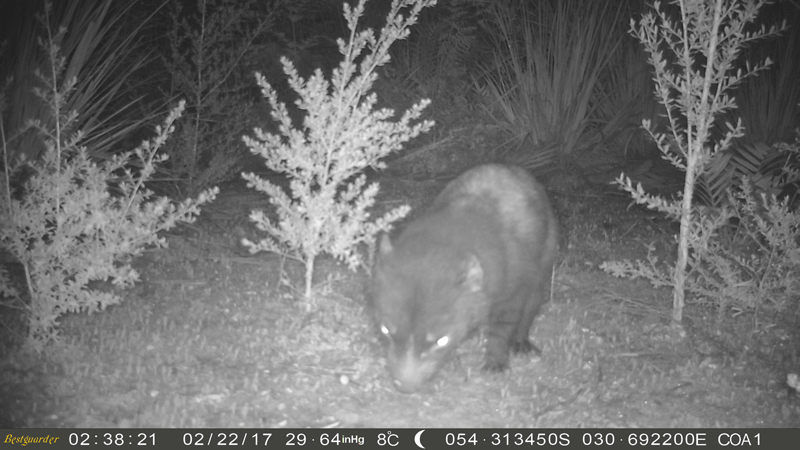
Bob Brown Foundation's campaign for protection of threatened forests on the banks of the Tarkine's Frankland River maintains pressure on Premier Hodgman and Federal Environment Minister Frydenberg with the treesit and forest camp continuing.
Conservationist Dr Lisa Searle, who has been in the treesit for the past week in the threatened forests has been replaced by a new treesitter. Jess Rettig has climbed up into the treesit this morning, Jess is a University of Tasmania Zoology and Plant Science student.
"These Tarkine forests are the stronghold of not only all life but that of more than one Tasmanian endangered species. Intact forests and ancient Gondwanan forest has become so rare that is should be treated as such," Jess Rettig said.
"In Hobart on Friday we had 130 people protest this logging out the front of Premier Hodgman's office, and in Melbourne, community members delivered hundreds of signed letters to Environment Minister Frydenberg. We are building our campaign with the aim for Forestry Tasmania to back off the logging and the Government provide secure protection for these forests and the Tarkine in a National Park," Bob Brown Foundation's campaign manager, Jenny Weber said.

Photo: Michael Dempsey
"Each night while the camp has been in place, an Endangered Masked Owl has been recorded. Our fauna cameras have captured 3 healthy looking Tasmanian Devil indviduals so far, and all have been recorded deep in the proposed logging coupes," Jenny Weber said.
"Tasmanian Devils are vanishing elsewhere in Tasmania, while in these Frankland River forests the intact forests provide safe habitat. Logging these forests in the Tarkine for no gain has to be stopped," Jenny Weber said.
At this link are photographs from the Tarkine canopy vigil by Steven Pearce.
https://www.dropbox.com/sh/28jfsvmm3yl5o20/AADVG4DI4ME8hqpxn8W37_CIa?dl=0
Attached: full resolution photograph of the third Tasmanian Devil recorded in the threatened logging coupes.
Contact
Jenny Weber 0427 366 929

Photo: Charles Chadwick

Photo: Charles Chadwick

Photo: Charles Chadwick

Photo: Michael Dempsey

Photo: Michael Dempsey
Day 6 in the Tarkine Canopy Vigil – Frankland River forests

Jess Rettig and Lisa Searle
Day 6.
Hello hello supporters, firstly Thankyou! Its quite amazing to know you're all out there backing us as I undertake my first day on the tree perch. I've had a great day of weather so far so also thankyou Tarkine for easing me in gently. I'm happily settling into this little tree home and it's comforting to hear my friends below me planning the day, carving out salvaged burls (as you do) and stomping around on logs trying to gain some phone reception. These people are my real life heroes. I love them.
I've spent the first few hours in awe of the view and although I visited the amazing Wonder Woman herself (Lisa) a couple of times I hadn't yet stopped for long enough to take in the valley below me. What a magnificent sight!! Anytime I need a reminder about the significance of this place I turn my back to see red fruiting Celery Top pine, flowering leatherwood, tall tea tree, dark myrtle forest and bright green eucalypts peeping above the canopy.
It's been a busy weekend with visits from supporters and many tasks on the ground that stretch into the evening. It's been tiring and I'm really enjoying the peace up here as I munch on some kindly donated home baked Anzac biscuits - a much appreciated treat!
Whilst we have been successful in recording evidence of Masked Owls in these coupes, we have been sighting and/or hearing them most nights. Now our ground crew task is to see if we can find the Owls nesting tree. If we are successful in this task it should provide exactly what is required to help save this precious part of the Tarkine, though sadly logging is exempt from laws that protect endangered species.
Jess Rettig
Day 4 in the Tarkine Canopy Vigil – Frankland River forests
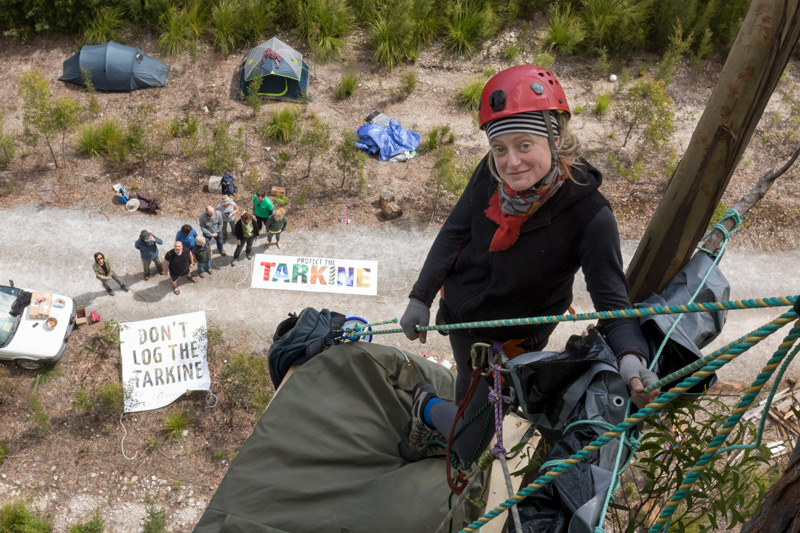
Lisa Searle - canopy vigil. Photo: Steven Pearce
Day 4.
I thought about working out how many hours I have been up here but settled on 'lots'. Some pass quickly, some slowly. Today I've been a feeling a bit up and down, my mood surprisingly attuned to the weather. A squall of rain and cold wind sees me frantically pulling my waterproof system into place and huddling, scowling, under my tarp. A few warming rays of sunlight and I am smiling, standing up and stretching, looking out across the forest landscapes around me, and watching my friends below me, this incredibly passionate and brave group of people who are willing to spend their time camped out on a logging road taking care of me and waiting for unfriendly visits from cops and Forestry workers. I couldn't do this without them.

Lisa Searle - canopy vigil. Photo: Steven Pearce
I probably shouldn't admit this... But I dropped the Go-Pro today. Oops. Freak accident but very disappointed with myself. Luckily it was in it's special shockproof waterproof case and the case works! No damage from a 20m fall! I am usually so careful, everything up here is attached all the time either to myself, the sit, or the tree. Will be even more careful from now on.

Lisa Searle - canopy vigil. Photo: Steven Pearce
I love feeling the gentle, grounded movement of the tree in the wind. I love knowing that while we are here these forests are safe for another day. I love seeing and hearing glimpses of the life and ecosystem going on around me. A pair of Yellow-Tailed Black Cockatoos swooped right past me before, their bright yellow patches and unmistakeable calls a stark contrast against the soft constant noise of wind in the dull-green eucalyptus canopy.

Dr Lisa Searle, Conservationist in the threatened Frankland forests.
Forest Protests in Hobart and Melbourne today regarding logging in Tasmania’s Tarkine
Media Alert 24 Feb 2017

Photo: Carly Rudsen
Bob Brown Foundation is organising two protests today calling on Federal Environment Minister Frydenberg and Premier Hodgman to provide protection for the forests and halt the proposed Frankland River logging in Tasmania’s Tarkine.
HOBART – Executive Building 1pm – 1:45pm
MELBOURNE – Environment Minister Frydenberg’s office – 3:30pm
“For the past two weeks we have had conservationists camped in these threatened Tarkine forests, as Forestry Tasmania is scheduled to start logging this month. Dr Lisa Searle has been in a treesit in the forests since Monday. Endangered species in the forests have been recorded by conservationists, Tasmanian Devils, Wedge-tailed Eagles and Masked Owl, while camped in the forests these past weeks,” Jenny Weber said.
“Endangered species and rare species like the giant freshwater crayfish rely on these forests staying intact rather than logged. The globally significant value of intact tract of old-growth forests that are in these proposed logging areas and the benefits to mitigating climate change from protecting forests are all very important reasons to have Forestry Tasmania back off from logging and secure protection granted to the Tarkine,” Jenny Weber said.
Dr Lisa Searle is available for interviews from her treesit, with limited phone coverage – her phone number is 0429 986 686
Contact
Jenny Weber 0427 366 929
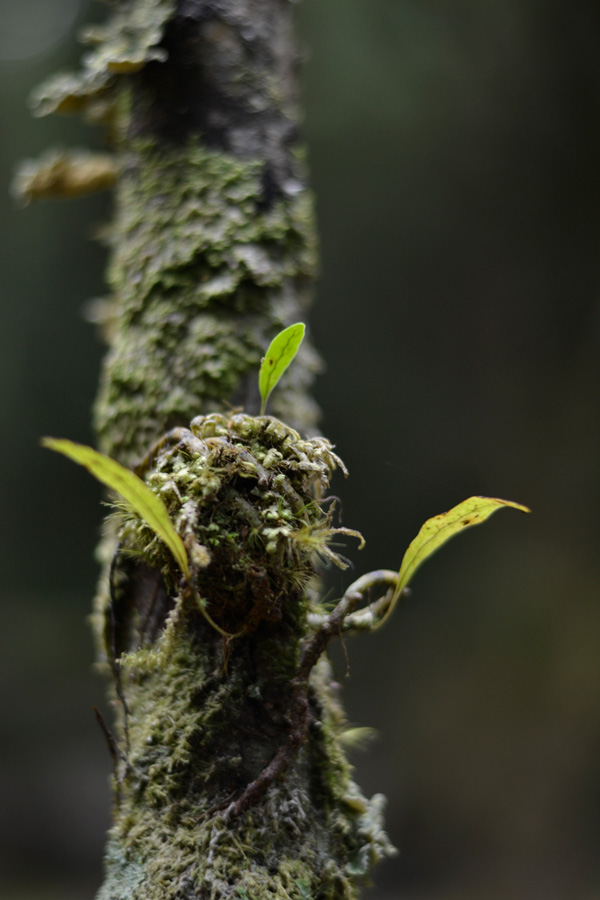
Photo: Carly Rudsen

Photo: Carly Rudsen

Photo: Carly Rudsen
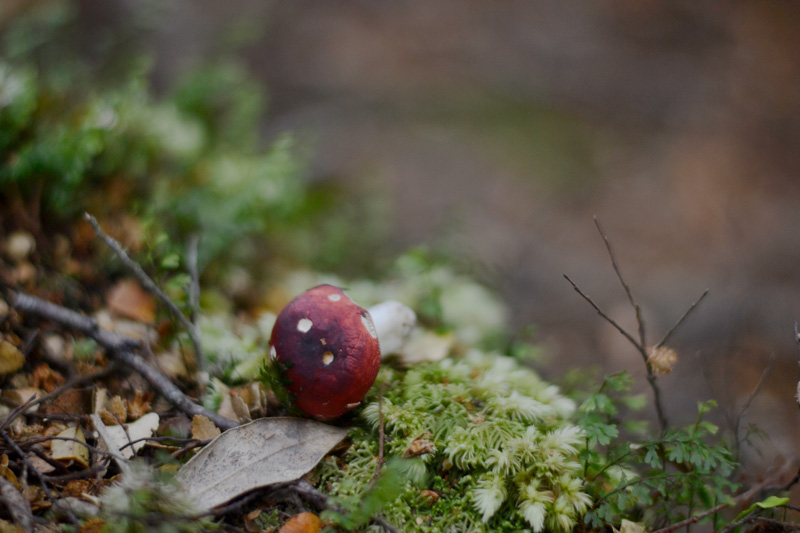
Photo: Carly Rudsen
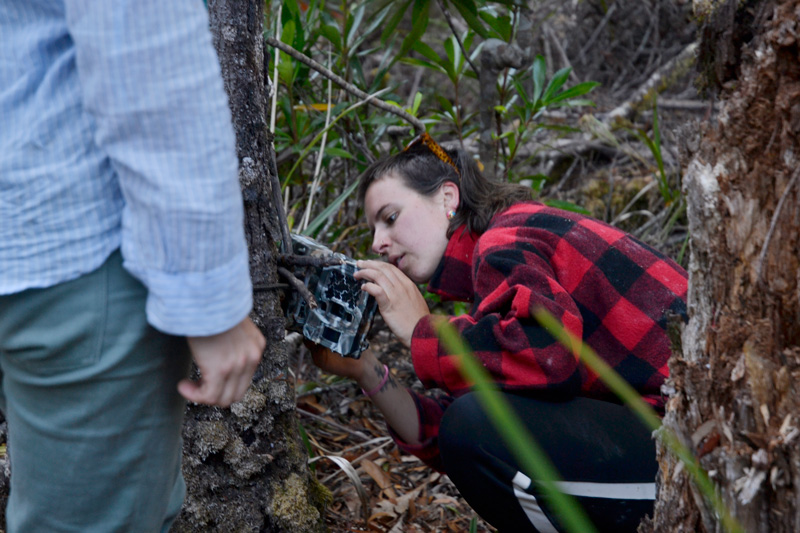
Photo: Carly Rudsen
Lament for a forest almost lost, or almost safe?

Photo: Isabelle Chigros-Fraser
Upon arriving at an old growth forest in Tasmania, the cry of the Yellow Tailed Black Cockatoos is always a feeling of coming home. Arriving at the Tarkine’s Frankland River forests and hear the familiar cry of the cockatoos, it sets shivers all over to think how many forests the cockatoo has seen plundered. As they fly over the vast forested regions, often in pairs, and sometimes in flocks of a hundred or more.
The only black cockatoo found in Tasmania. Unlike other cockatoos, a significant proportion of the diet is made up of wood-boring grubs. Birds place their ear against the surface of dead trees to listen for the sound of grubs beneath. If a grub is detected the bird will use their powerful bill to tear chunks from the tree to reach the grub, often leaving a small pile of woodchips at the base of the tree. Such scarred, dead trees are a common sight in Tasmanian forests.
A long-lived species, Yellow-tailed Black-Cockatoos have a long breeding season, which varies throughout their range, although in Tasmania it is generally from October to February. Both sexes build the nest in hollows of tall, mature trees, generally eucalypts. The hollow is lined with wood chips. The same tree may be used for many years.
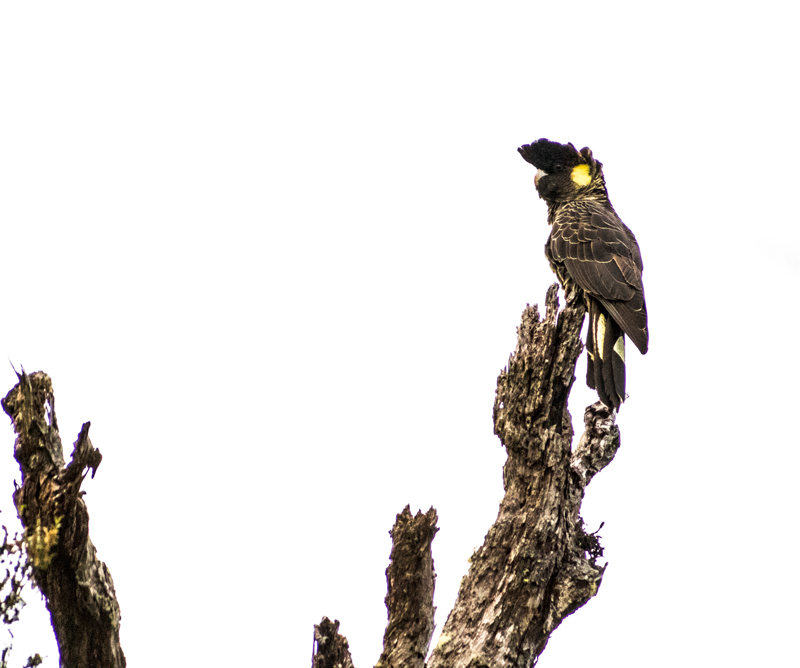
Photo: Isabelle Chigros-Fraser
While it is common in Tasmania, it is the common species that I often worry we take for granted and are also set for the endangered list, while it is the endangered species that harness most of our working attention as conservationists.
The cacophony of sounds while I camped last week in these ancient threatened forests awakens our appreciation to the vast population of species that will be lost in the coming weeks when the bulldozers and chainsaws arrive.
Four different species of frogs, the distant call of the boo book owl, and the chatter of the colony of ring-tailed possums that surround our camp. Just a very small roll call of the residents of this 75 hectares of scheduled logging area.
When the sound of the wild Tarkine coast rumbled the ocean sounds over our camp one night, I was left astounded at how precious takayna/Tarkine is. To be truly immersed in ancient rainforests and eucalyptus forests flanking a wild river full of giant freshwater crayfish, Astacopsis gouldi and hear the ocean roar. The awe of this place filled me with great concern for its future.
Now being back in my office working to support the team in the forests, Lisa in the treesit and raise awareness about the impending loss of these ancients forests, I see a flock of 12 yellow-tailed black cockatoos fly past my windows. I only work with the hope that it will be their forest homes that we keep safe. Would I be so naïve after all these years fighting for the forests to think we could but save these ones?
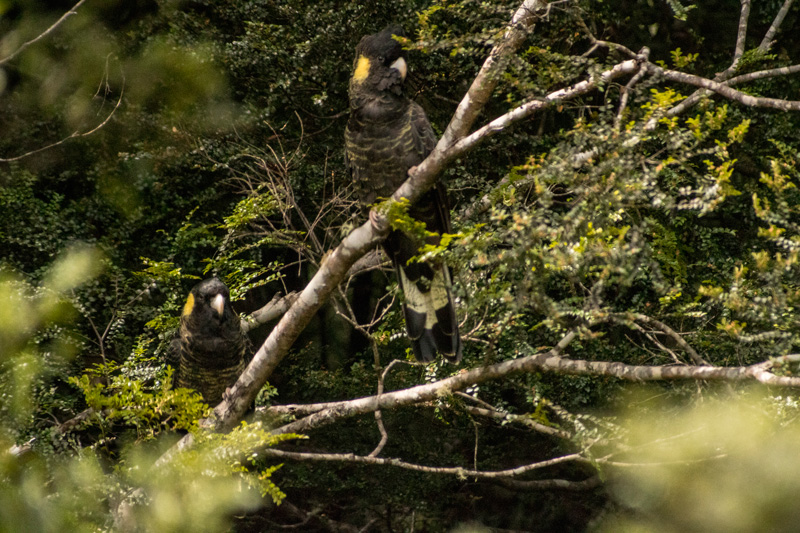
Photo: Isabelle Chigros-Fraser
All these photographs of the Cockatoos were taken last week in the threatened Frankland River forests by Isabelle Chigros-Fraser.
Jenny Weber
Day 3 in the Tarkine Canopy Vigil – Frankland River forests

Photo: Lisa Searle
Day 3. A difficult start this morning. The wind continued to howl all through the night, forcing this tree to dance a pretty wild dance, meaning the treesit ended up on a bit of a tilt by morning. I felt as if I was sleeping in one of the Sky Cells from the Vale (In-joke for Game of Thrones fans ;-)
First job for the morning was to reinforce the sit so it won't move around so much if we get more wind like that again.
My friends down below cheered me up by sending up a hot cup of tea and breakfast, along with a copy of an article from the Advocate yesterday, featuring Yours Truly. Was great to see that we really are making an impact. Also heard that our Facebook posts have reached over 117,000 people so far, which is incredible. The feedback we are getting is overwhelming. It fills me with hope and brings tears to my eyes to know that there are so many people out there who care about this place as well. There is another vigil in Hobart tomorrow at the Executive Office at lunchtime and I can't wait to hear how it goes. Hope there is an amazing turnout. The time for sitting back is past. The time for action is now. We really need to make Forestry Tasmania and the Tasmanian government know that logging these areas is unacceptable.

Photo: Lisa Searle
Apart from adjusting the sit and some rigging, and a few hours spent in 'the office' (I say office but really I am exactly the same place as always) with phone calls, texts, emails etc, I have managed to have a game of scrabble today. One of my friends climbed up for a visit and we had a treacherous, windy game of scrabble and managed not to drop any pieces! She beat me by a whisker but it was a good game.
Forestry Tasmania have just arrived for a visit. Drove slowly past the base of my tree taking photos but didn't really stop to talk. We have been wondering when they would show up. We must be causing a bit of a nuisance for them, and I suspect they know that we have the potential to be even more annoying if chainsaws and bulldozers and log trucks start rolling in.
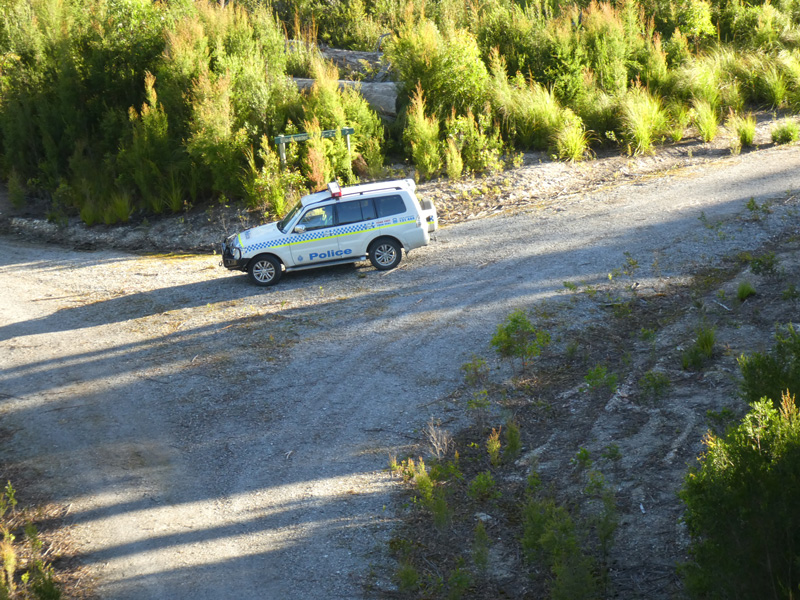
Photo: Lisa Searle
We would love to have more people out here, if you want to come and find us get in touch with Jenny at the Bob Brown Foundation.
Tarkine National Park NOW!!!!
Dr Lisa Searle, Conservationist in the threatened Frankland forests.
Endangered species recorded in Tarkine forests imminently threatened by logging
Media Release 23 Feb 2017

Conservationists at the Bob Brown Foundation are urgently calling on the Federal Environment Minister and Premier Hodgman to intervene and halt proposed logging of Tarkine forests, after endangered species have been recorded in the forests in recent days. Today images of healthy Tasmanian Devils recorded in the threatened logging coupe have been released and will be sent to Minister Frydenberg and Premier Hodgman.
Meanwhile the treesit vigil in the threatened forest canopy continues, conservationist Dr Lisa Searle has spent her third night in the tree sit, supported by a team of survey volunteers in the forests.

An endangered Masked Owl and Tasmanian Devils have been recorded in the threatened forests over the past days as Forestry Tasmania prepares to log the forests. Using wildlife surveillance tools the conservationists recorded healthy Tasmanian devils on wildlife cameras and a Masked Owl using an Owl Broadcast Megaphone.
Conservationists have been surveying the conservation values in the forests for the past week, including establishing a tree sit in the forest canopy on Monday.
Bob Brown Foundation has released a new short film, showing the giant freshwater crayfish that relies on the river habitat that is flanked by these proposed logging coupes. https://www.youtube.com/watch?v=ziFI_aXpNrA
“With every forest that is logged in Tasmania without strong environmental laws and without due protection for endangered species, unique and globally significant wildlife are being sent to the brink of extinction. There is no point having an Environment Minister in our Federal Government if they are going to stand by while species are lost,” Bob Brown Foundation’s campaign manager Jenny Weber said.
“As long as Forestry Tasmania is scheduled to log these areas in the Tarkine, with the support of our state government, then the government is failing the forests, the environment and wildlife protection,” Jenny Weber said.
“Minister Frydenberg and Premier Hodgman still have time to halt this proposed logging in the Frankland River forests and deliver environmental protections and real climate action,” Jenny Weber said.
“The Tarkine is a last stronghold for a number of precious species, the world’s largest freshwater crayfish, wedge-tailed eagle, Tasmanian devil and masked owl. Vast tracts of habitat in Tasmania has been destroyed and pushed these species to the brink of extinction,” Dr Lisa Searle, conservationist in the Tarkine Canopy Vigil, said.
Community members will be participating in peaceful protests in Melbourne and Hobart tomorrow, calling on the Federal Environment Minister and Premier Hodgman to protect the Tarkine and halt the proposed logging in the Frankland River forests. The Bob Brown Foundation is campaigning for a Tarkine National Park and world heritage listing for the region.
Full resolution photographs attached:
Endangered Tasmanian Devil photographed in threatened forests.
Dr Lisa Searle in tree sit at Frankland River threatened forests.
Contact
Jenny Weber
0427 366 929
Conservationist Visiting from Brisbane
Words and Photos By Isabelle Chigros-Fraser

The area of the Tarkine in which Julie and I are camped is due to be logged this year. I wake up early enough to hear the twitching of nocturnal life about us. It is warm in my sleeping bag, and the air is cold and fresh out. I lay listening. The sardine cans that we left out the night before rattle. Julie opens her tent flap to see an endangered Tiger Quoll disappear into the forest.
I met Julie two days prior when she kindly picked me up from Hobart Airport to drive me up here into the North West of Tasmania to see some of the most beautiful forest on earth before it is logged. She is an environmental activist, at one point titled “professional protester” although she was never paid, who has spent much of her youth blockading at Wattle, Northcliffe 7, Beverly, and at the Olympic Dam uranium mines.
I really thought I could make a difference then, she says, but when you watch a place you love being bulldozed… her voice trails off.

We get out of our tents. Julie has the kettle on, ready for a morning coffee. We look around at the forest, leaves bent low with night-moisture, the tree-tops stretching into the sky far above the dense undergrowth.
And this is only “the seen”. There is so much in this forest that remains unseen: the communication of the trees through their roots and through the fine webs of fungus beneath the soil, the dark dens of Tasmanian Devils and Tiger Quolls.
Julie is trained in botany. She looks about while the kettle heats up.
How old are these trees? I ask
I can’t say exactly, because I have never seen Nitida trees this big. But they could be around three-hundred years old. This hasn’t been touched since before European settlement. See that one with the holes in it?
She points to a giant tree that twists up into the morning light. It has holes all the way up it.
That is being eaten by something, she says, Could be fungi. Most of these gums are in their final stages of life. When they die, this will revert back to rainforest. It almost has already.
How much virgin forest is there left in the world?
Hardly any.
And they are just going to crush it?
Yep.
She looks around.
Most of these trees are dead. They won’t even make any money out of it, she adds.
She doesn’t sound at all surprised. In fact, her voice is resigned. It has the hard tone that one’s voice has when one is in grief.
Here is rare virgin forest, home to thousands of forms of life, including the critically endangered Tiger Quoll. It is a rainforest growing out of quartzite (something, Julie tells me, that many experts have thought impossible). It has not been surveyed thoroughly by scientists, so there are probably many other things in here that no-one knows about, and Forestry Tasmania are coming in to knock it down with, it seems, the high chance of no profit.

Why do they do it if there will be no profit? I ask someone a few days later.
Just so it looks like they are doing something, I guess. It’s more political. A lot of jobs are at stake.
It rains on and off that day. During a break in the rain, Julie and I go for a walk. We turn off a side road and see the beginnings of a logging operation. It is a tree grave-yard. The wood lies dead and grey and lifeless on the ground. It has been compressed by some heavy machinery after being logged. It feels dead compared with the forest we are camped in, which is filled with movement and sound. Here, all is silence.
I think about the loggers and their jobs. Growing up poor in a rural area, I have some understanding of the challenges these people face. I understand the insecurities of poverty and the culture of fear that can accompany it. There simply aren’t that many jobs out here in the North West of Tasmania. It is not like these people have a smorgasbord of jobs to choose from, and many of them love their homes. They want to feed their families.They have a connection to place. But with Forestry Tasmania running at a loss, and only so much forest to log, at some point things will have to change. At some point, jobs, in this sector at least, will be lost.
This is a multi-faceted disaster–and make no mistake, this is truly a disaster–that has come about because of weaknesses in our democratic systems and a lack of foresight and management. And one must always have compassion for those caught up in the thick of it if the problem is to be truly understood.
But then there is the larger issue of the value of these forests, not only in a time of climate change, but as virgin forests, there is so much we can learn from places like this: relatively untouched places. These forests are of great value globally, not only locally, yet only a small portion of locals get to decide its fate. It is the height of insanity to log these places when so few of them remain in the world, and when we know so little about them. We will, no doubt, have to start the process of regenerating forests all around the world at some point. This has already begun in some places.
And what of the non-human lives that inhabit these forests? This is home for some species that are barely hanging on. What does it mean for us to wipe out an entire species? How do we understand this kind of loss?
On the way back to camp, I hear a bird calling, and I walk into the thick undergrowth in the hope of seeing it. I slip a little on the moss underneath. Just as I am out of sight, a police car drives past. It has come from the direction of our camp.

I head back to camp and notice that the zip of my tent is open and jammed. I made sure to close the tent before I left because of the rain. I can only assume that the police have searched my tent.
Protesting here in Tasmania is illegal. You can get more prison time for protesting peacefully than you can for assaulting another human being. I look inside the tent. Is my wallet in a slightly different position? Was my ID sticking out like that when I left? I ask myself.
In a “democracy" where a citizen cannot protest peacefully, what does that citizen have other than a vote three times a decade? Where is the space for one’s voice?
Where is the democracy?
Isabelle Chigros-Fraser
Canopy Vigil Video
Lisa Searle sent a short video from her perch in the canopy of the Frankland River forests....the Tarkine needs permanent protection.
Day 2 in the Tarkine Canopy Vigil – Frankland River forests

Photo: Lisa Searle
"Day 2 dawned clear and windy in this little treetop perch. I can see my friends moving around below me, emerging from their tents and from the bush, making tea and breakfast, brushing their teeth, chatting. Normal morning activities. I am doing all these things as well but when you are confined to a 1x2m platform and wearing a harness, all tasks are more difficult.
Last night around 7pm the police paid us a visit. They were from Burnie and seemed very friendly, asking whether we had emergency equipment, satellite phone, etc. They didn't ask us anything about who we are, why we are here or how long we are planning to stay, but did say they would 'drop in for a visit' every day.
We have an Owl Broadcast Megaphone, a device for playing bird calls and late last night the ground crew pulled it out and started playing Masked Owl calls. We were rewarded with a number of calls, some of which seemed so close they could have been coming from the trees right next to me.
We have so many precious endangered creatures in Tasmania, and another growing list of extinct or near extinct. The Tarkine is a last stronghold for a number of these species - the giant freshwater crayfish, wedge-tailed eagle, Tasmanian devil, masked owl. We humans have already destroyed so much of their habitat and pushed them to the fringes, to the brink of extinction. Can't we just leave their last safe places alone?
I sit here in this tree hoping against hope that I will receive a message, telling me that Forestry Tasmania are pulling out, leaving this area, finally listening to the community and giving some respite to the forest and its' creatures."

Photo: Lisa Searle
Dr Lisa Searle, Conservationist in the threatened Frankland forests.
